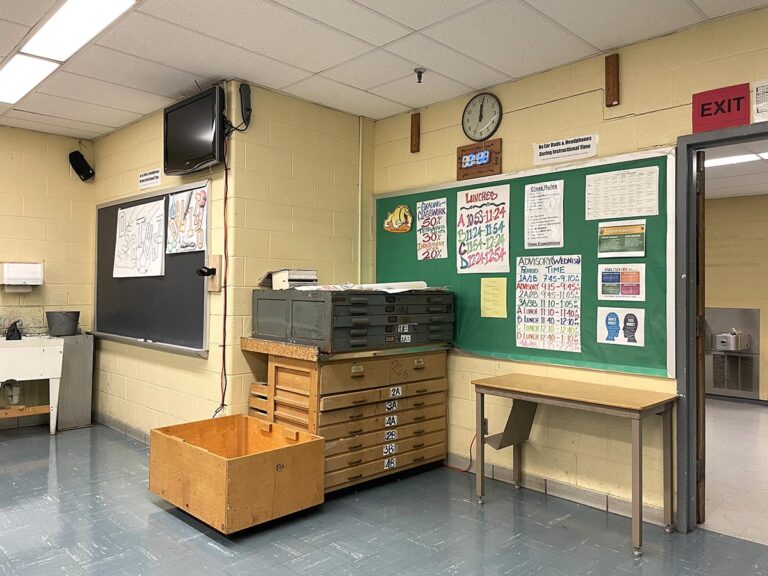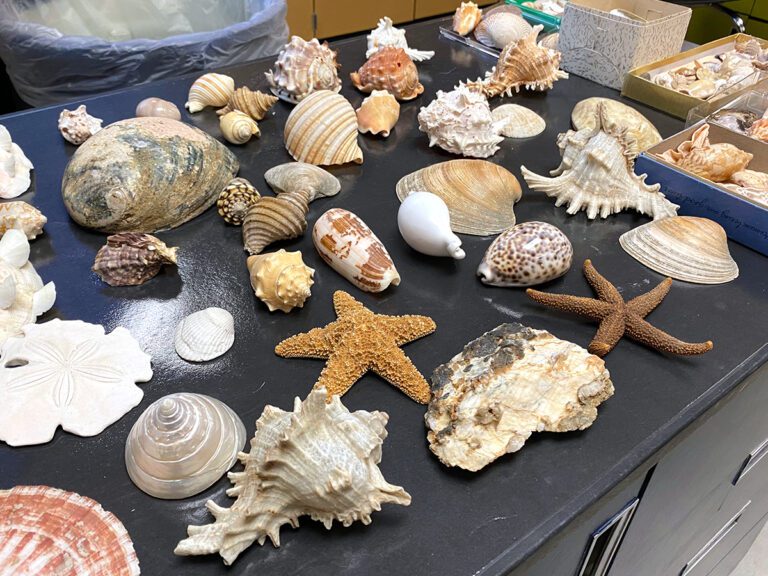When clutter becomes a challenge in the art room, the first instinct is to create more space to store things. But, often the opposite strategy is more effective. Instead of making more space for the piles of papers and supplies, consider intentionally creating less.
Here are 4 questions to ask yourself to see if you’re ready to ditch your desk.
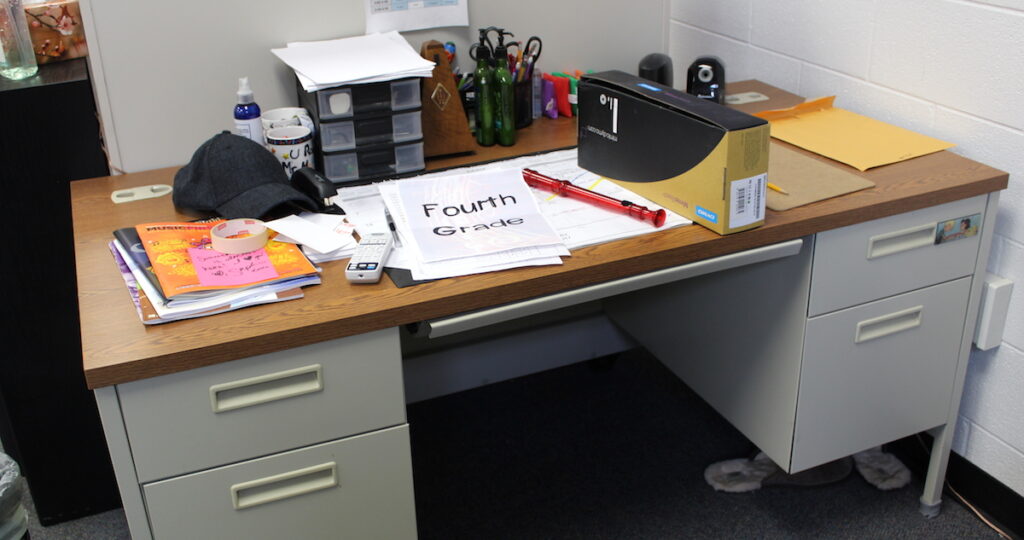
1. Am I using my desk effectively? (Hint: Probably not.)
Face it, your “teacher desk” is a workspace designed for a regular ed teacher. It was meant to serve as a clean surface for prolonged traditional lesson planning or grading. The drawers were intended to hold a small quantity of “teacher only” supplies, like scissors, scotch tape, highlighters, and pens. That desk and “teacher chair” were supposed to provide the educator with a quiet place to sit and reflect throughout the school day.
Wait, what? Does this really sound like furniture that fits the rhythm of an art teacher’s schedule? You probably aren’t using your desk effectively because it was not designed for you.
I suspect the majority of your daily teacher tasks are being performed at a table, where your students’ supplies and yours intermingle because you’re all artists using the same space. And I suspect your teacher desk, like mine, has become nothing more than a dumping ground. Think about it: when was the last time you even sat at that desk during class time? Maybe it’s time to commit to getting rid of it for good and freeing up space for something else!
The Takeaway: You’re not using your desk space well. Why keep it around!?
2. Does having a desk allow me to put off dealing with clutter?
Last year, after analyzing the daily function of my teacher desk, I realized it was operating less as a workstation and more as an elevated parking lot for all of the organizational tasks I was avoiding. Throughout the school day, supplies, paperwork, and all the mail from the faculty workroom went onto my desk. When the final bell rang, I was always left with disorganized piles needing my attention at the time I had the least attention to give.
When I committed to ditching the desk, I found I no longer had an easy place to dump things. If I had extra supplies, I had to actually put them away. Paperwork had to either be filed or recycled, because I couldn’t just stack it on my desktop, hoping to forget about it. Overall, the absence of my desk forced me to remain more organized on a daily basis.
The Takeaway: Ditching the desk will help you deal with clutter as it presents itself.
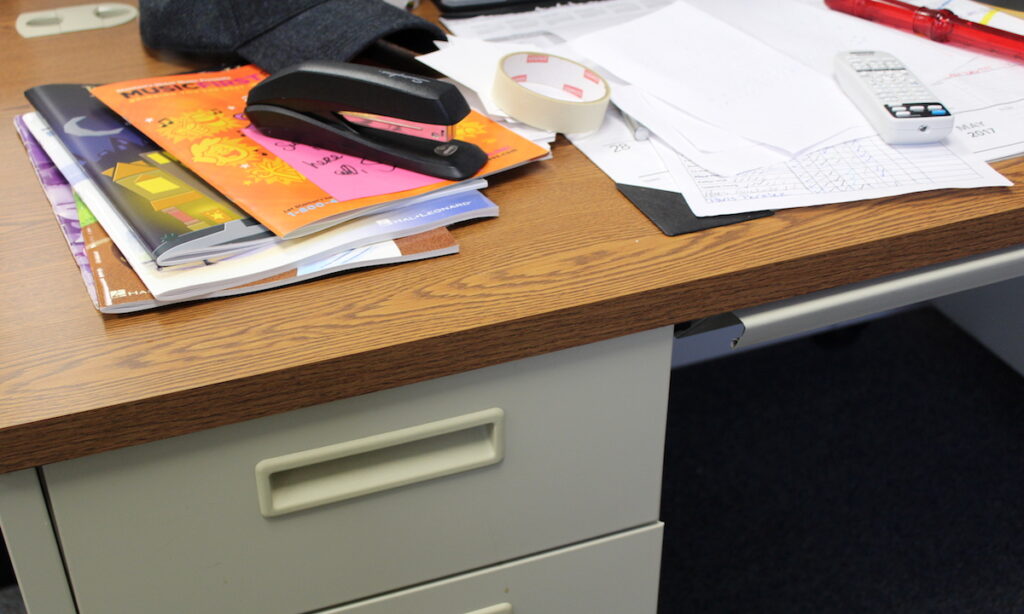
3. Am I short on space?
Besides streamlining my organizational habits, eliminating my desk opened up whole new possibilities for classroom configurations. My desk was a behemoth, commanding a large footprint on any classroom floor plan I tried. Removing the desk made way for other, more student-centered spaces. Suddenly, I had extra room for a sensory table or a larger classroom library. These spaces were more collaborative and spoke to my philosophy as an art teacher.
The Takeaway: There are more interesting things you can do with your desk space!
4. Isn’t a teacher desk just a symbolic reminder of an archaic teaching philosophy?
I wanted a collaborative art room, where students’ ideas were valued just as much as mine. But, maintaining a huge, teacher desk at the front of the room continued to reinforce an unspoken student vs. teacher dynamic. A private desk space at the front of the room seemed to indicate that I was still an unapproachable “sage on the stage” with all the right art answers. Now, without my desk, my students and I are forced to share the same workspaces, and I wouldn’t have it any other way.
The Takeaway: Ditching the desk can send a powerful message to your students.
Removing the teacher desk is not going to work for everyone. But, if you DO ditch that desk, be prepared to consider a few practical aspects of your decision.
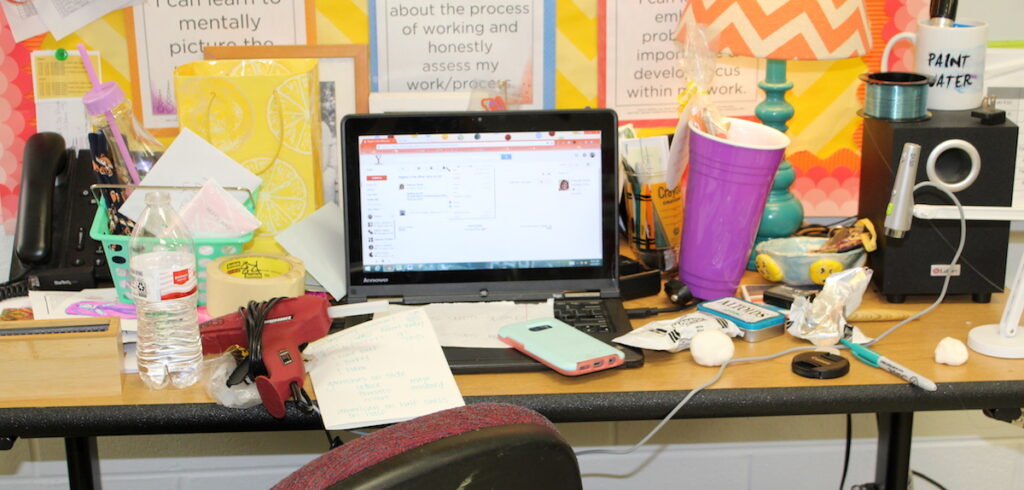
1. You’ll need a designated space for dangerous supplies.
There are a few supplies that probably need to remain under lock and key. Depending on the level you teach, you may need to develop a strategy for the dangerous items previously living in your desk drawers. Think rubber cement, white out, and replaceable cutting blades. For me, the solution was moving these items into a locked cabinet inside my storage closet.
2. You’ll need a place to store confidential documents.
Maintaining student confidentiality is an essential task for all teachers. Whether it is a 504 form, an IEP, or a behavior plan, these documents cannot be left on counters or shelves due to the absence of a desk. Investigate your district’s human resource department policies regarding the best practice for maintaining confidentiality. It is likely they require these documents to be locked up. In this case, a locking filing cabinet or locking flat file drawer is a suitable substitute.
3. You may need to find an alternative place to take a “time out.”
Teaching art is deeply rewarding but also deeply draining. Some professionals enjoy having their desk serve as a student-free oasis in the middle of a chaotic classroom. Don’t discount the effect removing your desk will have on your day-to-day mental state. Will you still feel like you have the space to relax in your own classroom? I found I still needed a tiny table (approx. two feet by four feet) pushed against a wall. This small piece of real estate is large enough to hold just my laptop, document camera, a cup of coffee, and my sanity.
As you plan your back-to-school classroom floor plan, reflect deeply on your traditional teacher desk. Is it an integral part of your day? Or, would removing that desk open up some positive possibilities for you and your students? If so, be brave and ditch your desk!
How often do you use your teacher desk, and for what types of activities?
If you have already ditched your desk, what are the benefits and challenges?
Magazine articles and podcasts are opinions of professional education contributors and do not necessarily represent the position of the Art of Education University (AOEU) or its academic offerings. Contributors use terms in the way they are most often talked about in the scope of their educational experiences.




